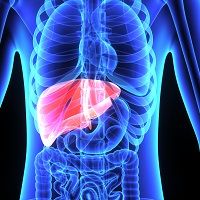Article
Treating 5 Percent of All Patients with Hepatitis C Would Reduce Costs and Total Infections
Author(s):
Comparing current treatment models to lessons learned in the early days of the AIDs epidemic, University of Southern California researchers are advocating that more than just the sickest patients with hepatitis C be treated with new drugs that have much higher cure rates than past regimens.

Comparing current treatment models to lessons learned in the early days of the AIDs epidemic, University of Southern California researchers are advocating that more than just the sickest patients with hepatitis C be treated with new drugs that have much higher cure rates than past regimens.
Efforts to reduce infections and health care costs would be more effective if 5% of all patients with the virus were treated rather than the current approach, according to a cost-benefit analysis conducted by USC Schaeffer Center for Health Policy and Economics and other institutions. Results from the study, which was funded by Gilead Sciences, were published in the journal Health Affairs.
In an article posted on the USC website, one of the study’s authors, Dana Goldman, the Schaeffer Center director and a professor of public policy, said, “We made a mistake with HIV by limiting access to treatment to just people who had AIDS, and we ended up with a virus that has been with us for decades. We didn’t initially treat HIV aggressively enough in part because the science wasn’t there to justify it. With hepatitis C, we have the science. We just need to find a way to finance it.”
Traditional therapy for the hepatitis C virus involved long stints of antiviral treatment that could last up to a year and include painful interferon injections and serious side effects. Several new breakthrough drugs have been approved in the last two years that have much shorter treatment times and higher cure rates, but also have hefty price tags.
The analysis compared three treatment options to what researchers identified as the current approach (baseline scenario), which treats patients who are in the most advanced stages of the disease. Hepatitis C is a bloodborne virus that when left untreated can turn chronic and cause severe liver damage which may lead to liver cancer or the need for a liver transplant.
Treating 5% of the hepatitis C-infected population would reduce the number of cases from 2.7 million to 39,000 over 50 years, according to the researchers involved in the analysis. In contrast, the current approach that relies on use of older traditional drugs would reduce hepatitis C infections to only 207,000 cases, curing approximately 5 times fewer patients, during the same time period.
The best case scenario (and the one with the greatest social value) would treat all patients infected with the virus and reduce infections to 1400 cases in 50 years, according to the article. However, given current health care funding limits, that option was deemed unrealistic by the researchers.
“Treat advanced disease” was the most expensive option considered by the researchers and involved using the most effective drug regimen available for individual patients’ genotype. All four options that were analyzed considered only diagnosed patients and the diagnosis rate was assumed to be 50 percent, the authors noted in the journal article.
“Under a wide range of parameter values, treatment with new agents, while expensive, generated more social value than treatment with less expensive older agents,” concluded the authors, “and treating patients at earlier stages of liver disease generated more value than waiting to treat them until liver damage had progressed,” states the article.



